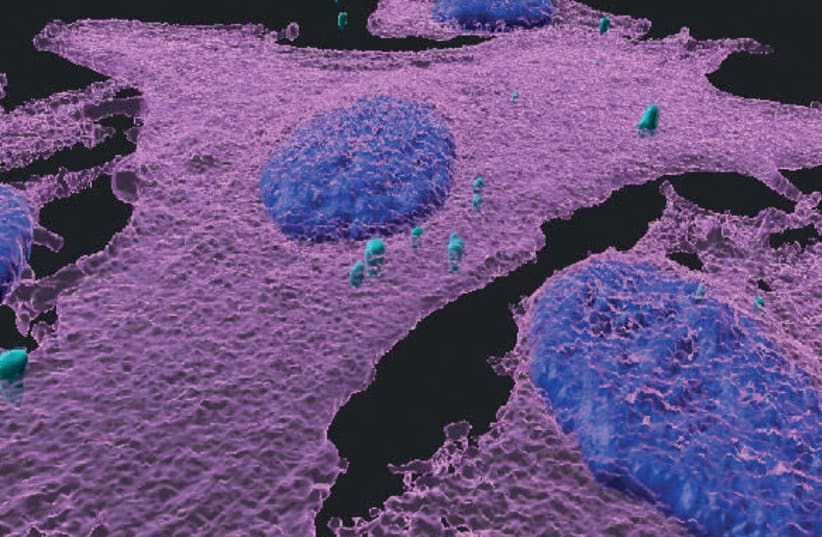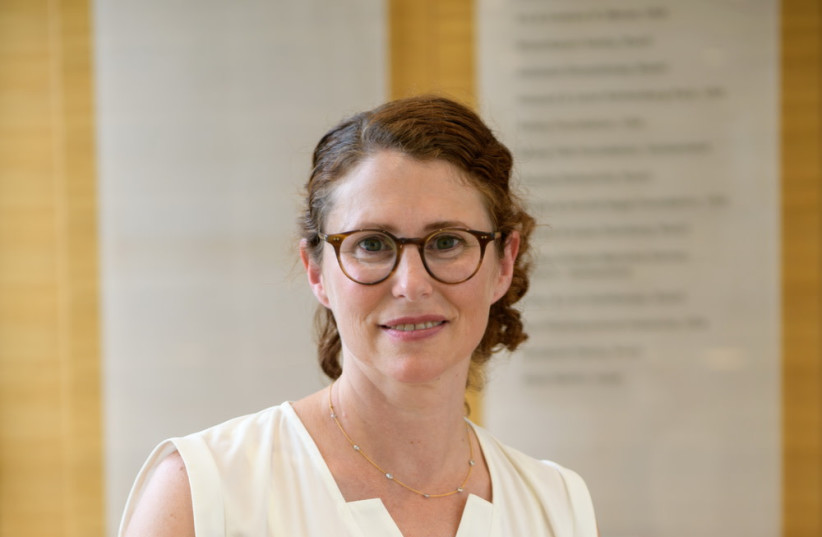A team of Israeli and US scientists have found a way to make cancer immunotherapy more accessible by using data to analyze what tumors the body can "see" relatively easily, according to a study published on Friday in the Journal of Clinical Investigation.
Led by PhD student Dr. Aviyah Peri and overseen by Prof. Yardena Samuels of the Weizmann Institute of Science, the study introduced a new method of finding features, known as cancer "hot spots," that are common to many tumors and can therefore be used to develop effective immunotherapy for entire groups of patients.
Cancer hot spots are physical structures on the outer membranes of cancer cells that can provide the immune systems of multiple patients with “access” to a tumor. The immune system uses T cells to combat other cells that the system identifies as "foreign," and the hot spots serve as markers that activate the T cells.
The cancer hot spots contain mutated forms of antigens antibody generators – known as "neoantigens." Since most neoantigens result from unique mutations characteristic of individual tumors, the same therapy cannot be applied to other patients when a particular neoantigen is used to activate a patient’s T cells. Only a handful of neoantigens – those derived from recurrent mutations appearing in numerous patients – have qualified as hot spots, but these have been hard to find and until now have been found mostly by luck.
Samuels, Peri and the rest of the team developed a method for systematically identifying these cancer hot spots.
The scientists applied algorithms to search through international databases containing information on the genomes of thousands of cancer patients, focusing on melanoma (skin cancer). The team’s search produced a number of neoantigens that could potentially be considered hot spots and subsequently subjected these candidate molecules to laboratory analysis, in which they isolated the mutated parts of the neoantigens and investigated their interactions with T cells.
Using this approach, the scientists identified a hot spot neoantigen that appears in some 20% of melanoma cases, isolating the T cell receptor that can recognize this hot spot neoantigen in melanoma tumors. They then engineered T cells from healthy individuals and incubated them in a test tube with tumor samples from patients whose tumors displayed this hot spot. The T cells were activated by the neoantigen, killing the tumor cells in a highly specific manner – that is, only those cells that displayed the neoantigen.
“We’ve uncovered a neoantigen that is expressed in thousands of new melanoma cases every year, and we’ve shown that it can be used in these patients to mark tumor cells for immune destruction,” Peri said.
“Our study suggests that our newly developed platform can lead to ‘off-the-shelf’ immunotherapies in which T cell receptors that recognize cancer hot spots can be prepared in advance, ready to be applied in groups of patients whose tumors have been shown to harbor these hot spots,” says Samuels. Such treatments would be easier and cheaper than tailoring personalized T cells to each new patient.
Yet another major advantage of this approach is that it makes use of hot spot neoantigens expressed in all tumor cells. This means that the hot spot immunotherapy is more likely to wipe out the entire tumor, rather than only parts of it, as was the case with therapies that targeted neoantigens present in only some of the tumor cells.
“Our novel approach may make it possible to apply personalized treatments on a larger scale than today,” Samuels said. “It is ready to be developed for use in hospitals, and it can be applied to a variety of cancers, not only melanoma.
Along with Peri and Samuels, the study was conducted with the late Prof. Nir Friedman of Weizmann’s Immunology Department, Prof. Masha Y. Niv of the Hebrew University of Jerusalem, Prof. Steven A. Rosenberg of the National Cancer Institute, USA, Prof. Cyrille J. Cohen of Bar-Ilan University, Dr. Ansuman T. Satpathy of Stanford University School of Medicine, and other researchers.

